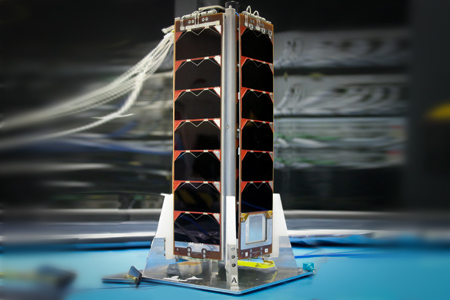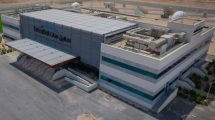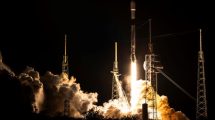 Surrey Satellite Technology Ltd (SSTL) has confirmed the successful launch of VESTA, a 3U nanosatellite technology demonstration mission that will test a new two-way VHF Data Exchange System (VDES) payload developed by Honeywell for the ExactEARTH advanced maritime satellite constellation. The satellite was launched into a 575 km sun-synchronous orbit as part of Spaceflight’s SSO-A SmallSat Express Mission on board Falcon 9 from Vandenberg Air Force Base, on 3 December 2018.
Surrey Satellite Technology Ltd (SSTL) has confirmed the successful launch of VESTA, a 3U nanosatellite technology demonstration mission that will test a new two-way VHF Data Exchange System (VDES) payload developed by Honeywell for the ExactEARTH advanced maritime satellite constellation. The satellite was launched into a 575 km sun-synchronous orbit as part of Spaceflight’s SSO-A SmallSat Express Mission on board Falcon 9 from Vandenberg Air Force Base, on 3 December 2018.
Speaking about the launch, Sarah Parker, Managing Director of SSTL said: “I am delighted to confirm that our spacecraft operators in Guildford have successfully made contact with VESTA and established that all initial systems checks are nominal. I congratulate our customer Honeywell on a successful launch and I look forward to seeing mission results from this innovative small satellite in the near future.”
Chris Bee, a Business Manager at Honeywell Aerospace UK added: “While leading the way in demonstrating small data packet transfer from a small payload into remote maritime locations beyond our phone networks, this mission is also leading us into an even broader range of remote communication scenarios to increase the connectivity of our world.”
VESTA is a 3U nanosatellite technology demonstration mission that will test a new two-way VHF Data Exchange System (VDES) payload developed by Honeywell for the exactEarth advanced maritime satellite constellation. The 4kg satellite has three-axis pointing capability, an SEU tolerant on-board computer, VxWorks operating system and also flies a Commercial-Off-The-Shelf (COTS) VHF deployable antenna system developed by Innovative Solutions in Space for the VDES transceiver. VESTA will be operated in orbit by SSTL, with the payload data being downlinked directly in S-Band to Goonhilly Earth Station.
The development of VESTA was co-funded by the UK Space Agency through its National Space Technology Programme (NSTP) which stimulates the growth and development of the UK space sector through investing in technology development. The project was led by Honeywell.
Dr Graham Turnock, Chief Executive, UK Space Agency, added: “There are still areas of the Earth where communication remains difficult, none more so than out at sea. Satellites can bridge this gap, however testing new technology is risky and expensive. That’s why the UK Space Agency is helping to fund promising UK technologies like VESTA as part of the government’s Industrial Strategy, to kick start innovation and growth, while delivering safety at sea and jobs back home.”
SSTL previously designed and supplied the exactView-1 satellite platform, launched in 2012, which forms part of the ExactEARTH AIS constellation used by ships and traffic to monitor ship movements through busy shipping channels and harbours and to provide information on global shipping movements.
SSTL also recently confirmed the successful launch of KazSTSAT, a small Earth observation satellite jointly developed by SSTL and JV Ghalam LLP, a joint venture between JSC “National Company Kazakhstan Garysh Sapary” (KGS) and Airbus Defence and Space. The satellite was launched into a 575 km sun-synchronous orbit on board Falcon 9 from Vandenberg Air Base on 3 December 2018.












Add Comment